Guide to the Cycling FTP Test and how it can inform your training and improve your Performance
 Karen Parnell
December 30, 2021
Karen Parnell
December 30, 2021
Guide to the Cyclist FTP Test and how it can inform your training and improve your Performance
FTP is a commonly used term but can be misunderstood, here’s what you need to know about this fitness metric.
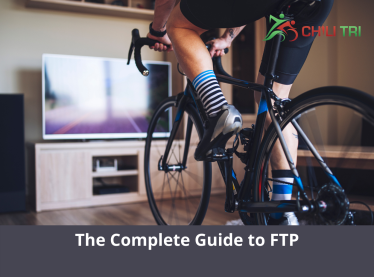
You have probably heard the term FTP, but it is not widely fully understood. This blog demystifies this fitness measurement.
Functional threshold power (FTP) is one of those terms that old hand triathletes, cyclists and coaches speak about nonchalantly, but it can be confusing for new triathletes. Once you grasp and understand this commonly used cycling metric you can use it to boost your training.
FTP is the average number of watts that a rider can sustain in an hour, and acts as a measure of fitness at a point in time. Ideally, it refers to a steady effort, not the up-and-down levels you might see looking at your power from a hilly ride or cyclocross race.
FTP, which is typically calculated by a 20-minute test, is useful because it’s a number that you can track, so you can see improvements as you test regularly. A lot of the time, we ride and think we’re getting faster, but FTP is one way to know for sure if we’re getting faster, versus just thinking it because of a group ride that went well, or you felt good during an indoor cycling session.
Plus, you’ll need to know this number if a coach prescribes training zones with power.
While FTP can be helpful it can be a misunderstood term in cycling. Below I detail I go through everything you need to know about FTP, and how it can improve your cycling.

FREE 31 indoor cycling sessions for Zwift, Rouvy and TrainerRoad
How do you measure FTP?
First, you need a power meter. Power metres can be embedded in pedals, your bikes crank, or you can even use your smart indoor turbo trainer.

Then, you need a place where you can ride for at least 20 minutes straight. Optimally, you would test in a one-hour time trial, but that isn’t realistic for most riders. Instead, the standard procedure (and the option that works well for your first FTP test) is the following:
- Calibrate your power meter
- Warm up for 10 to 15 minutes
- Ride at an all-out effort for 5 minutes
- Followed that by 10 minutes of easy spinning
- Finally, ride at an all-out effort for 20 minutes, aiming for a pace that’s your hardest consistent effort—it should remain steady and not undulate. (For easier calculation, make sure you press the lap button before you start your 20-minute effort).
- After, ride easy for about 10 minutes to cool down.
Then, take the average power of that 20-minute effort and multiply it by 0.95 to get your FTP. For example, if you average 200 watts, your FTP will be 190 watts.
Once you’ve got your FTP and feel comfortable taking the test, you can graduate to a more advanced FTP test method as described below.
You can gauge your effort by your rate of perceived exertion (RPE), a 1–10 scale with 1 being an effortless spin and 10 being an all-out sprint or use your previous FTP results. Cool down post-test with 10 to 20 minutes of easy pedalling followed by five minutes of your favourite lower body stretches. This is an example of a good post ride stretch.
For any indoor test remember the WTF which is Water, Towel and Fan!

FREE 31 indoor cycling sessions for Zwift, Rouvy and TrainerRoad
The FTP Test Protocol: Power
Start with a three-part, 20-minute warm-up
You can start with a dynamic warm-up off the bike before your start if you have been sitting for a long time before you get on your bike, then:
- 0:00–07:00: Easy spin, slowly increasing effort (RPE 2 to 4).
- 7:01–14:00: Steadily ramp up to RPE of 8 out of 10 (or 115% of your last FTP) and hold that 8 RPE effort for one minute.
- 14:01–20:00: Recovery spin (RPE 2 to 3), hydrate.
Follow immediately with a three-part FTP test:
- 0:00–2:00: Start at an RPE of 7 to 8 (or 110% of your last FTP).
- 2:01–10:00: Settle into your pace and hold it there.
- 10:01–10:30: At this midpoint, take 15 to 30 seconds to drop to around 60rpm while increasing resistance to maintain your power. This will lower your heart rate and provide a mental break.
- 10:31–17:00: Bring your rpms back up and cruise at 7 RPE. This section is the hardest. It’ll push your mental toughness. Focus on maintaining your cadence, while staying relaxed.
- 17:01–20:00: Empty the tank and aim for 8 to 9 RPE or about 15 to 30 watts higher than you’ve been averaging (or 106 to 109% of your last FTP). Finish strong!
It doesn’t matter if you test inside or outdoors. Just make sure you ride in repeatable conditions every time you complete the test. If you test outside, aim for a gentle hill with a 20-minute or longer climb, or at least a stretch of road that won’t involve frequent stops or steep downhills.
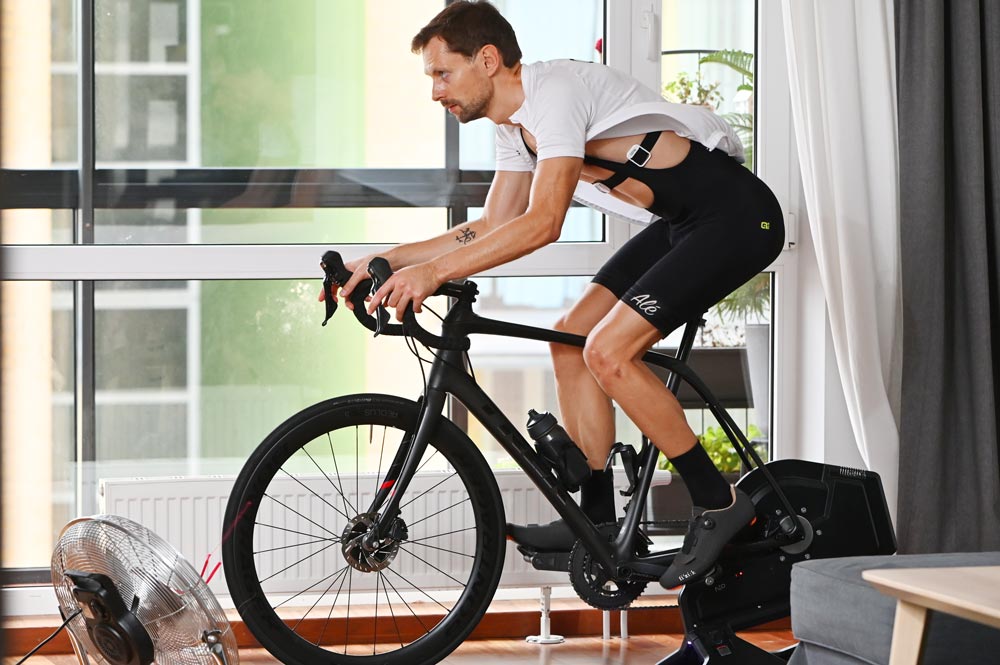
FREE 31 indoor cycling sessions for Zwift, Rouvy and TrainerRoad
Can I do an FTP type test without a Power Meter?
If you don’t have a power meter don’t worry you can do a Functional Threshold Test based on heart rate (Functional Threshold Heart Rate (FTHR), here´s how:
Functional Threshold and Training Intensity (Heart Rate)
Accurately monitoring intensity is essential for ensuring that you get the most out of your training. With work, family, and other commitments outside of cycling pressing your time on the bike, making the most of your valuable training time is essential.
Monitoring intensity guarantees that you will be making the most of the time you do get to ride and maximising your fitness gains. Therefore, one of the first priorities of most training plans is to conduct a functional threshold test which will give you your functional threshold heart rate (FTHR) if you train with Heart Rate or functional threshold power (FTP) if you have a power meter. From these figures you can then determine accurate and personalised training zones.
What is Functional Threshold?
Functional threshold represents the highest physical intensity that you can sustain for approximately one hour. Many riders think of this as like performing a 25-mile time trial effort as this requires a maximal, but evenly distributed effort for the entire distance. If you ride above this functional threshold intensity, then fatigue will set in rapidly and your pace will drop significantly. Functional threshold can be thought of as your cycling “red-line” and from this figure, highly accurate and personalised training zones can be calculated.
Why only test for 20 minutes?
Although the test is named the 20 mins functional threshold test, it is performed over 30 mins (the test protocol explains this further). An hour maximal effort is physiologically, psychologically, and logistically extremely demanding and an unrealistic proposition for the majority of riders. However accurate results can be estimated from a shorter, but still intense, 20-minute effort. For the Power version of the test the average power value for the 20-minute test, minus five percent will be your functional threshold power (FTP). Five percent is removed from the power result as this reflects the decline in power that would be seen should the test have been conducted for the full 60 mins. Conversely nothing is subtracted from the heart rate value, as this parameter would normally remain stable for the entire hour. Once you have your average heart rate or power figure then you can input them into our calculator which will give you your training zones.
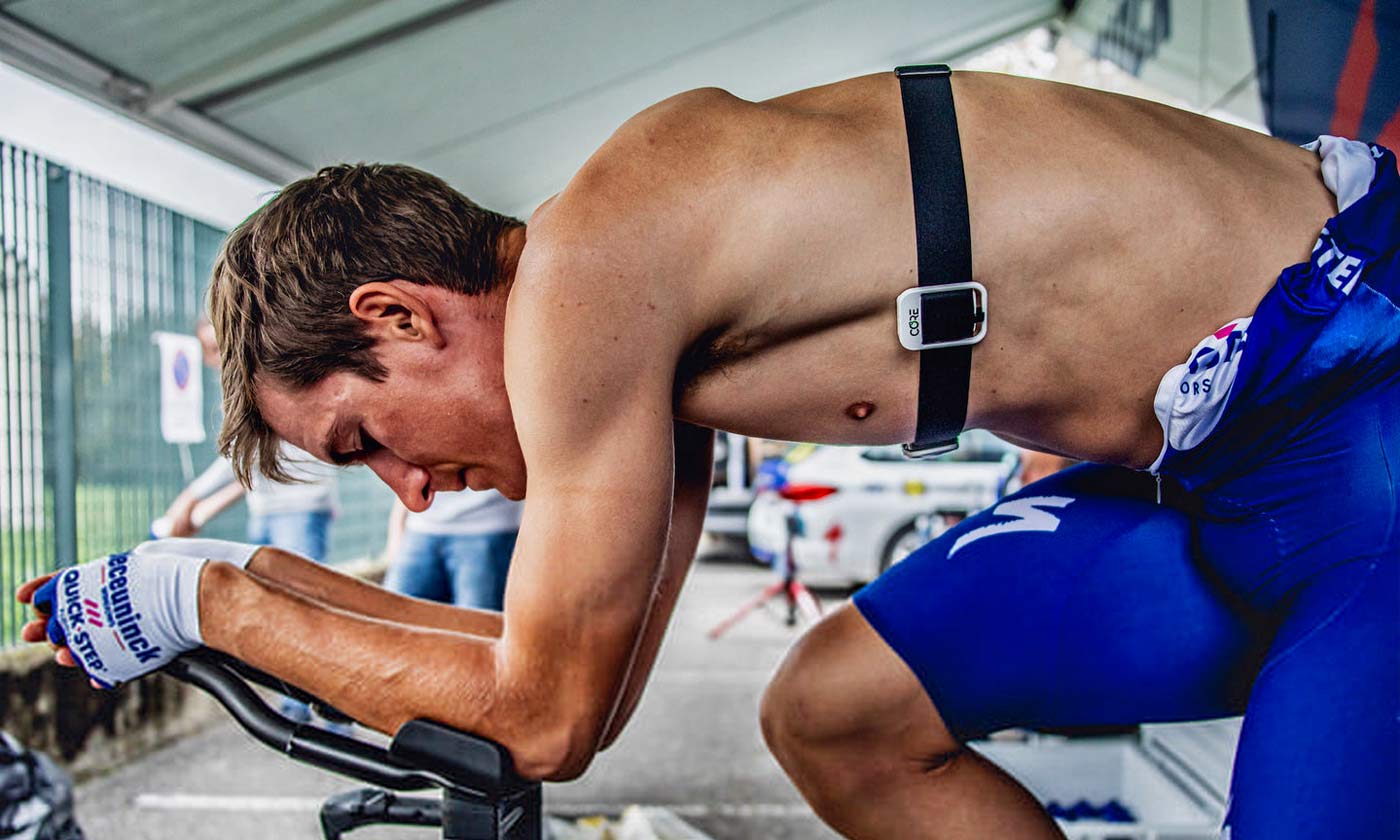
FREE 31 indoor cycling sessions for Zwift, Rouvy and TrainerRoad
Why test for threshold heart rate rather than maximal heart rate?
After working with numerous riders from complete novices to Olympic champions, British Cycling found testing for threshold to be far more accurate and reliable. Testing for maximal heart rate is extremely unpleasant, requires high levels of motivation and, the level you can achieve, can easily be affected by fatigue, low level illness or just having an “off-day”.
Additionally, riding at threshold will be a far more familiar and relevant effort level to most cyclists than an all-out maximal effort which makes accurately pacing the test far easier
What do I need to do the FTHR test?
You will need a heart rate monitor and cadence sensor. To complete the threshold test, the heart rate monitor will need to be able to log and recall average heart rate for the test period. You will also need to find a course that allows you to ride uninterrupted for 30 mins at an even intensity or you can do it on an indoor turbo trainer.
If you are doing the test outside choose a route that avoids sharp bends, heavy traffic, junctions, traffic lights and steep climbs or significant descents. The ideal is a continuous slight climb, but these can be hard to find. You can also complete the test on an indoor trainer, but some riders do find they’re unable to push as hard indoors and produce lower heart rate and power figures than when riding on the road.
If you are using a training App like Zwift, choose a route with a long continuous slight climb or complete their FTP power test if you have a Smart Trainer.
You may find it necessary to complete an indoor and outdoor test and produce training zones for both. The next time you repeat this test, you should complete it on the same bike and circuit or static trainer to keep the test valid.
Remember to record the weather conditions (such as temperature, wind speed and direction) for future comparison.
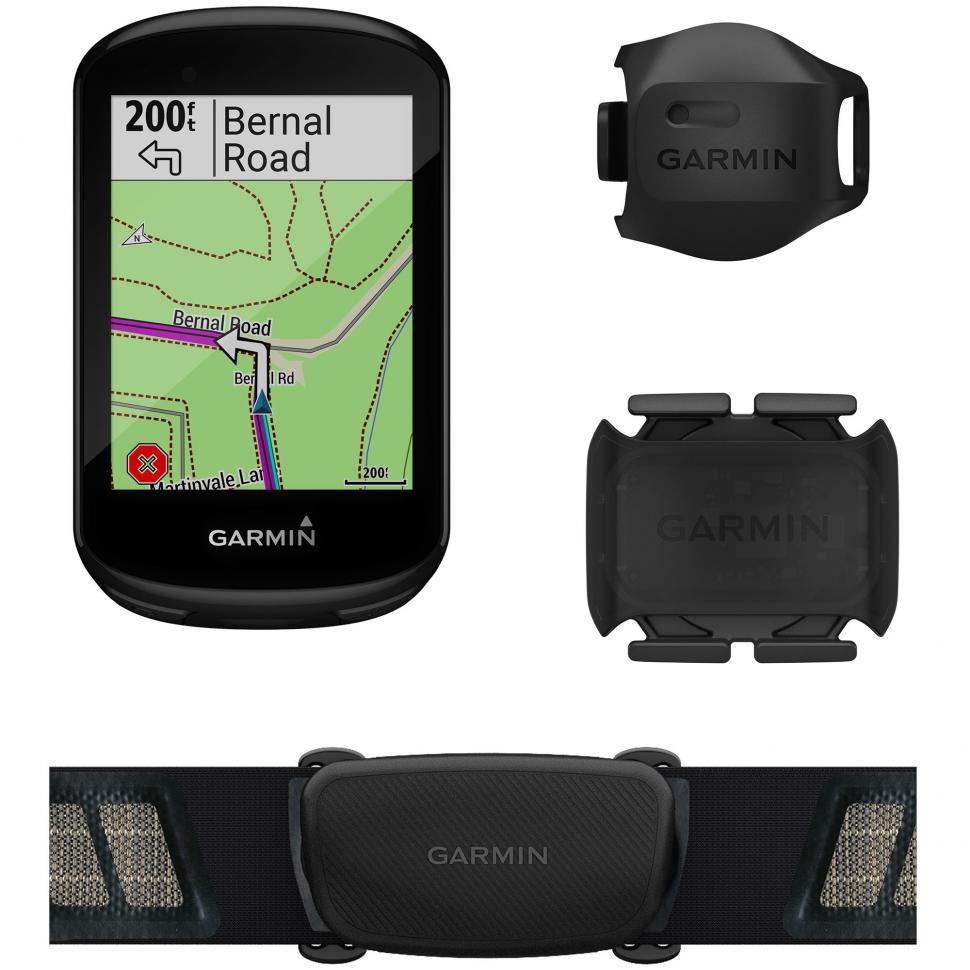
FREE 31 indoor cycling sessions for Zwift, Rouvy and TrainerRoad
Threshold Test Protocol
When done correctly, a threshold test is an extremely hard effort. Ensure you go into this test having had at least one rest day beforehand. Although the test is termed a 20 mins functional threshold test, it is performed over 30 mins, with the last 20 mins being where the functional threshold figures are established.
It is essential that you complete the full 30 mins, as this allows a steady state effort to be established. If you start too hard and have to stop after 20 mins, then your result will not be valid, and you will have to complete another test. You might want to err on the side of conservative pacing the first time you perform the test as you’ll have opportunities to repeat it throughout the plans.
The Threshold Test Procedure: Heart Rate
Duration Activity
Warm Up 20 minutes This could be a ride to the circuit you are going to use or the British Cycling 20-minute warm up.
Either way there needs to be an increase in intensity through this period.
If you are completing your test on a static bike, then use the British Cycling 20-minute warm up.
Main Test 30 minutes Ride as hard as you can sustain for 30 mins.
After 10 mins, start your monitor and record your average heart rate or power for the last 20 mins.
Aim for a cadence of 90-100 rpm throughout the test. This is very important as it will help ensure consistency the next time you complete the test.
Note down your average heart rate or power for the last 20 mins of the test.
Cool Down 10 - 20 minutes Easy riding then stretch out off the bike. Foam Roller (Foam roller routine) if you find this works for you.
To determine your training zones, input your average heart rate or power into the ChiliTri training zones calculator.
NB: It is recommended that riders who are injured, new to exercise or have health concerns do not take part in cycling fitness tests. These tests are for regular cyclists or triathletes who are looking to improve their cycling experience. If in any doubt then before undertaking any physical training or testing, please see consult your doctor who can advise you on taking up physical activity and fitness testing.
Here´s a great video on how to set up and use your Heart Rate (HR) Zones on your bike monitor and also how to do the test if you prefer video tutorials.
Now you have you FTP you can use it to calculate your power training zones using the ChiliTri power zones calculator.
Can FTP tests improve performance?
Testing every few weeks gives you a great indicator as to whether your training plan is working how it is intended. It also pushes you to do a relatively hard work out regularly, which can be great for someone who hates intervals and tends to skip out on high-intensity work.

FREE 31 indoor cycling sessions for Zwift, Rouvy and TrainerRoad
How should I use FTP results in my training?
Coaches will often use FTP when programming workouts to get more specific about interval sets. FTP doesn’t just give you a threshold number; it helps create “power zones,” similar to heart rate zones such as recovery, endurance, tempo, VO2, and sprint, which can be used to hone your training. You can put your FTP result into the ChiliTri Cycling calculator to work out your power training zones.
More importantly, regular testing can show progress, or lack thereof. While it isn’t a training tool by itself, analysing FTP test results does reveal if your training is working for you or if you need to change something to see better results.
A steady increase is ideal, but don’t expect big leaps. A 2.5 percent increase in FTP in a training cycle (around 6 to 8 weeks) is a good power increase. Anything more is unsustainable. If you see your FTP decline or stay stagnant for more than two tests in a row, it’s time to consult with your coach or adjust your training.
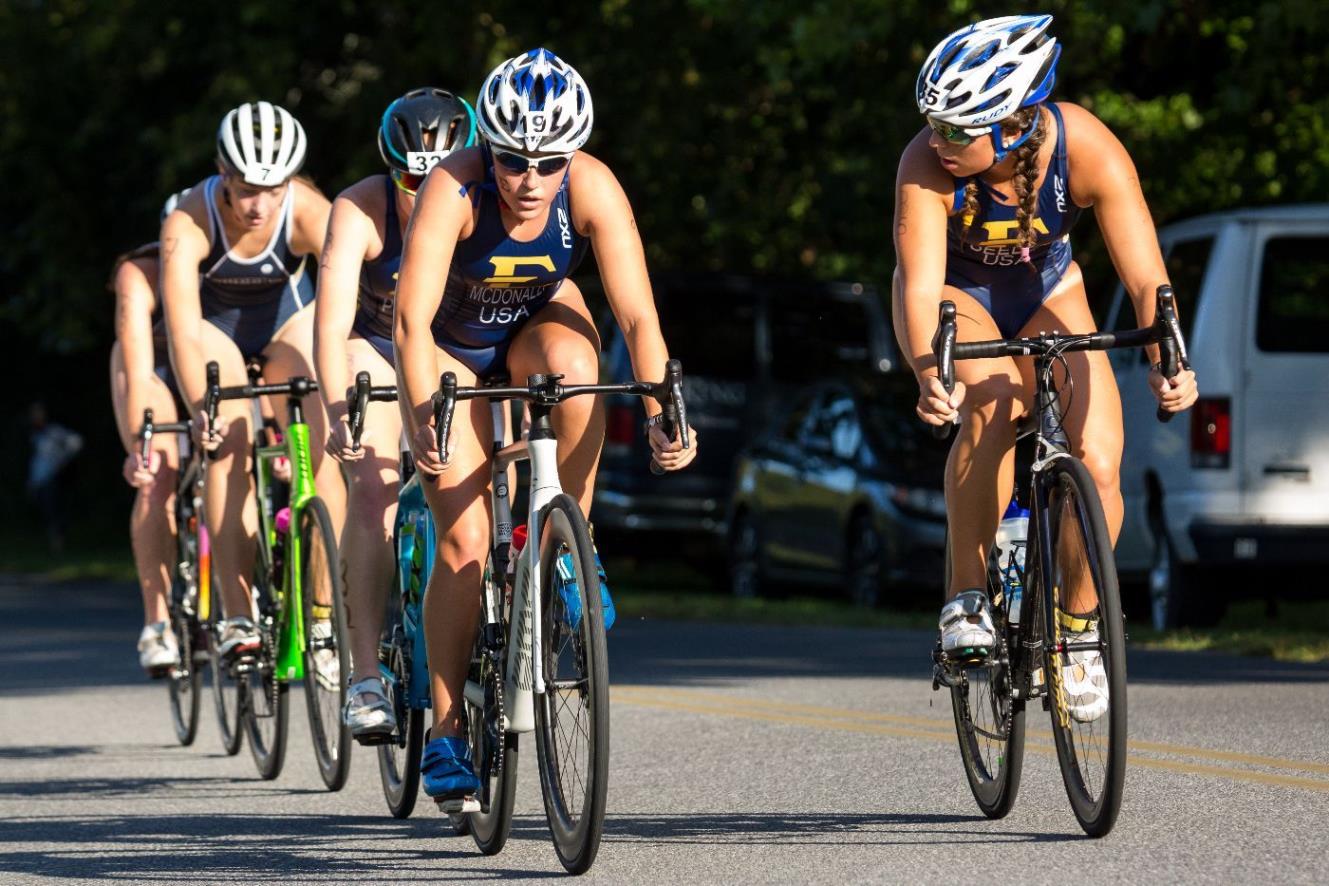
FREE 31 indoor cycling sessions for Zwift, Rouvy and TrainerRoad
How do I know if my FTP result is good?
To get a sense of how your FTP stacks up with other then converting it to a power-to-weight ratio is a good idea. Your power to weight ratio is your FTP divided by your weight in kilograms. (A 69kg or 150-pound rider with a threshold of 200 would have a power-to-weight ratio of 2.9). The average newer rider with some fitness will hover in the 2.0 range, while top cyclists in the world hover around 7.0. That number won’t affect your training at all, but it’s a good way to see how you compare to other riders.
What if my FTP is not as high as I want it to be?
Don’t stress about it. These numbers don’t exist in a vacuum. Your FTP will fluctuate depending on your season of training and current health status, plus any number of external factors during testing. A harsh headwind, extreme heat or cold, or even just a stressful week at work could all have an effect.
While having a good FTP test is ideal, just remember you might be in a phase of training where your endurance is improving for longer, easier efforts, or your high-end power for quick bursts is on the rise.
So rather than fixate on one bad test, keep training steadily, and you should see that number rise over time.
How often should I complete an FTP test?
If you get a test result you are not happy with, it’s tempting to repeat the test as soon as possible. Resist that urge. Testing monthly is perfectly fine, and since it’s an all-out effort, you don’t want to do it too often.
Conclusion: FTP Testing
As you can see an FTP test is useful to gauge how your training and training plan is going and can help you and your coach decide if it´s working for you. At the end of the day everyone is different but generally if you are following a well written training plan from your coach and you train consistently your FTP should increase over time making you a more powerful rider and ultimately faster come race day.
FREE 31 indoor cycling sessions for Zwift, Rouvy and TrainerRoad
If you want to boost your FTP then you can use an FTP Booster plan to kick start your training.
Karen Parnell is a Level 3 British Triathlon and IRONMAN Certified Coach, 8020 Endurance Certified Coach, WOWSA Level 3 open water swimming coach and NASM Personal Trainer and Sports Technology Writer.
Karen has a post graduate MSc in Sports Performance Coaching from the University of Stirling.
Need a training plan? I have plans on TrainingPeaks and FinalSurge:
I also coach a very small number of athletes one to one for all triathlon and multi-sport distances, open water swimming events and running races, email me for details and availability. Karen.parnell@chilitri.com
Get your FREE Guide to Running Speed and Technique
Get your FREE Swim Workouts for Triathletes E-book
Get your FREE Open Water Swimming Sessions E-Book
Get your FREE 31 Indoor Cycling Structured Workouts and Training Plan
FAQ: FTP (Functional Threshold Power) testing
What is FTP?
FTP stands for Functional Threshold Power, which is the highest average power output a cyclist can sustain for one hour without fatiguing excessively. It is an important metric used to gauge an individual's cycling fitness and determine training intensities.
Why is FTP important for cyclists?
FTP is a key indicator of cycling performance and is used as a reference point for setting training zones, monitoring progress, and prescribing workouts. By knowing your FTP, you can tailor your training more effectively, optimize training load, and target specific adaptations to improve endurance and performance.
How is FTP measured or tested?
FTP can be measured or estimated through various methods, including:
- FTP Test: This involves performing a maximal effort time trial for a specific duration, often 20 minutes or 60 minutes. The average power output from the test is then used to determine FTP.
- Field Test: A field test involves performing a challenging workout or time trial outdoors on a course or segment with known distance and elevation. The average power output is then used to estimate FTP.
- Virtual Platforms: Cycling platforms such as Zwift and TrainerRoad offer built-in FTP tests or workouts that estimate FTP based on power data recorded during the test.
How often should I test my FTP?
The frequency of FTP testing depends on various factors, including your training goals, training phase, and experience level. As a general guideline, it is recommended to retest your FTP every 6-12 weeks to track progress and adjust training zones accordingly. However, shorter intervals of 4-6 weeks may be appropriate during intensive training blocks.
What are the benefits of FTP testing?
FTP testing offers several benefits for cyclists:
- Training Zones: FTP testing provides accurate data to establish personalized training zones, which allows for more precise intensity prescription during workouts.
- Progress Monitoring: Regular FTP testing enables you to track improvements in your cycling fitness and performance over time, helping you evaluate the effectiveness of your training program.
- Goal Setting: FTP testing can help set specific, measurable goals based on power output and performance improvements.
- Training Optimization: By knowing your FTP, you can optimize your training program by targeting specific intensities and durations to elicit desired physiological adaptations.
- Race Strategy: Understanding your FTP allows you to pace yourself better during races or events by staying within your sustainable power output range.
How should I prepare for an FTP test?
To prepare for an FTP test, it is recommended to:
- Ensure adequate rest and recovery before the test to perform at your best.
- Warm up properly with an easy spin followed by some dynamic stretching and progressive efforts to raise your heart rate and activate the muscles.
- Choose a route or location that allows you to maintain a consistent effort without traffic interruptions or steep inclines.
- Stay properly hydrated and fuelled before and during the test to maintain optimal performance.
Can I improve my FTP through training?
Yes, FTP can be improved through targeted training. Structured training plans that include a mix of endurance rides, interval workouts, and specific threshold training sessions can help increase FTP over time. Consistency, progressive overload, and recovery are key factors in improving FTP.
Remember, it's recommended to perform FTP testing under the guidance of a qualified coach or professional, especially if you're new to testing or have specific training goals in mind.
References
Riding with power 4: Testing for FTP (britishcycling.org.uk)
https://www.trainerroad.com/blog/ftp-assessment-tips/
https://support.zwift.com/en_us/ftp-test-HypJnI_NH
https://es-eu.wahoofitness.com/blog/power-testing-what-when-and-why-do-them/
(PDF) What is known about the FTP 20 test related to cycling? A scoping review (researchgate.net)
#FTP #Chilitri #triathlon #cycling #swimmingtrainingplan #cyclingtrainingplan #runningtrainingplan #swimming #cycling #running
